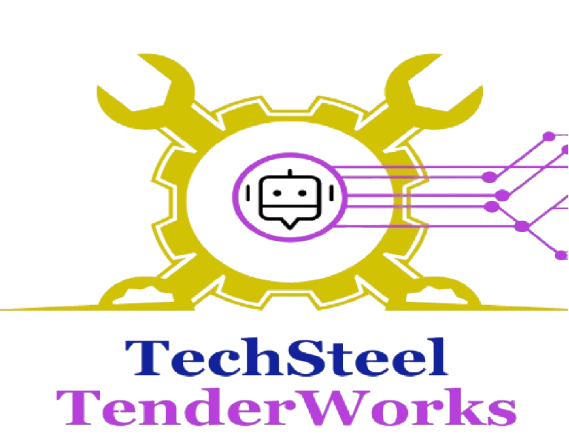The Symphony of Data - Mastering Technology Integration for Construction Excellence
Modern construction projects resemble complex orchestras where multiple technologies, systems, and stakeholders must harmonize perfectly to create successful outcomes. Technology integration represents the conductor’s baton that coordinates these diverse elements into cohesive, high-performing ecosystems that amplify construction performance beyond what individual technologies can achieve alone.
The Integration Imperative in Construction Technology
The construction industry’s digital transformation has introduced numerous powerful technologies: Internet of Things sensors, advanced analytics platforms, blockchain systems, machine learning algorithms, and cloud computing infrastructure. However, the true value of these technologies emerges only when they work together seamlessly rather than operating in isolation.
Data silos represent one of the most significant obstacles to construction technology success. When IoT sensors, project management systems, financial platforms, and quality control databases operate independently, valuable information remains trapped in separate systems, limiting its potential impact on project outcomes.
Successful technology integration creates unified data ecosystems where information flows seamlessly between platforms, enabling comprehensive analysis and coordinated responses that transform construction operations.
Real-Time Operational Intelligence
Integrated technology platforms provide project managers with unprecedented situational awareness through unified dashboards that combine data from multiple sources. Real-time visibility into material deliveries, worker locations, equipment performance, environmental conditions, and project progress enables rapid responses to emerging challenges and optimization opportunities.
Decision-making speed and accuracy improve dramatically when managers can simultaneously monitor all project variables through integrated systems. Rather than gathering information from separate platforms, integrated systems provide comprehensive intelligence that supports faster, more informed decisions.
Predictive capabilities emerge when integrated systems combine historical data with real-time monitoring. Machine learning algorithms can analyze patterns across multiple data sources to predict equipment failures, material shortages, weather impacts, or quality issues before they affect project timelines.
Cross-Platform Data Orchestration
Effective technology integration requires sophisticated data orchestration capabilities that manage information flow between diverse systems. APIs, middleware platforms, and cloud integration services create the infrastructure necessary for seamless data exchange between IoT devices, analytics platforms, blockchain networks, and machine learning systems.
Data standardization becomes critical when integrating multiple technology platforms. Construction projects generate information in various formats, units, and structures that must be normalized for effective analysis. Integrated platforms automatically convert, validate, and standardize data to ensure consistency across all systems.
Real-time synchronization ensures all platforms operate with current, accurate information. When material deliveries are recorded in IoT systems, this information immediately updates inventory management, project scheduling, and financial tracking systems, maintaining data consistency across all platforms.
Enhanced Stakeholder Collaboration
Technology integration dramatically improves stakeholder collaboration by providing shared access to verified, real-time project information. Architects, engineers, contractors, subcontractors, and clients can work from the same data foundation, improving coordination and reducing miscommunication.
Collaborative decision-making improves when all parties access integrated dashboards showing comprehensive project status. Rather than relying on periodic reports or fragmented information, stakeholders can make informed decisions based on current, complete project intelligence.
Communication efficiency increases through integrated notification systems that automatically alert relevant parties when conditions change, milestones are reached, or interventions are required. This automated communication reduces manual reporting overhead while ensuring timely information distribution.
Quality Assurance Through Integration
Integrated quality management systems combine automated inspection data from IoT devices with historical quality analytics, verified material provenance from blockchain records, and predictive quality algorithms. This comprehensive approach ensures consistent quality standards while reducing inspection time and costs.
Traceability becomes comprehensive when integrated systems track materials from supplier through installation, recording quality certifications, environmental conditions during transport and installation, and performance data throughout project lifecycle.
Predictive quality models analyze data from multiple sources to identify conditions that may lead to quality issues. Environmental sensors, material tracking systems, and construction process monitoring combine to provide early warning of potential quality problems.
Scalability and Future-Proofing
Integrated platforms provide scalability advantages that enable construction companies to expand capabilities without system overhauls. As projects grow in complexity or new technologies emerge, well-designed integrated systems can incorporate additional components while maintaining operational continuity.
Technology evolution accommodation becomes possible through flexible integration architectures that can adapt to new technologies and changing requirements. Rather than replacing entire systems, integrated platforms can evolve by adding new components or capabilities.
Investment protection occurs when integrated systems provide long-term value through adaptability and expandability. Companies that invest in comprehensive integration platforms position themselves for future technology adoption without starting from scratch.
Performance Optimization Through Synergy
The synergistic effects of technology integration create performance improvements that exceed the sum of individual technologies. When IoT data informs machine learning algorithms, blockchain systems verify the integrity of predictive analytics, and cloud platforms provide scalable processing power, the combined effect transforms construction operations.
Operational efficiency gains compound when integrated systems eliminate redundant data entry, automate routine processes, and provide comprehensive visibility into all project activities. These efficiency improvements directly impact project timelines and profitability.
Competitive advantages emerge from integrated technology capabilities that enable superior project delivery, enhanced client service, and more accurate bidding. Companies that master technology integration distinguish themselves in competitive markets through demonstrably superior performance.
The future of construction excellence lies in harmonious technology integration that creates intelligent, responsive, and efficient project delivery systems. TechSteel TenderWorks specializes in orchestrating these technological symphonies to deliver superior construction outcomes that benefit all stakeholders.
Success in construction technology integration requires strategic planning, stakeholder commitment, and expert guidance to ensure all components work together seamlessly toward common objectives. The investment in comprehensive integration pays dividends through improved efficiency, enhanced safety, and superior project outcomes that drive sustainable business growth.
